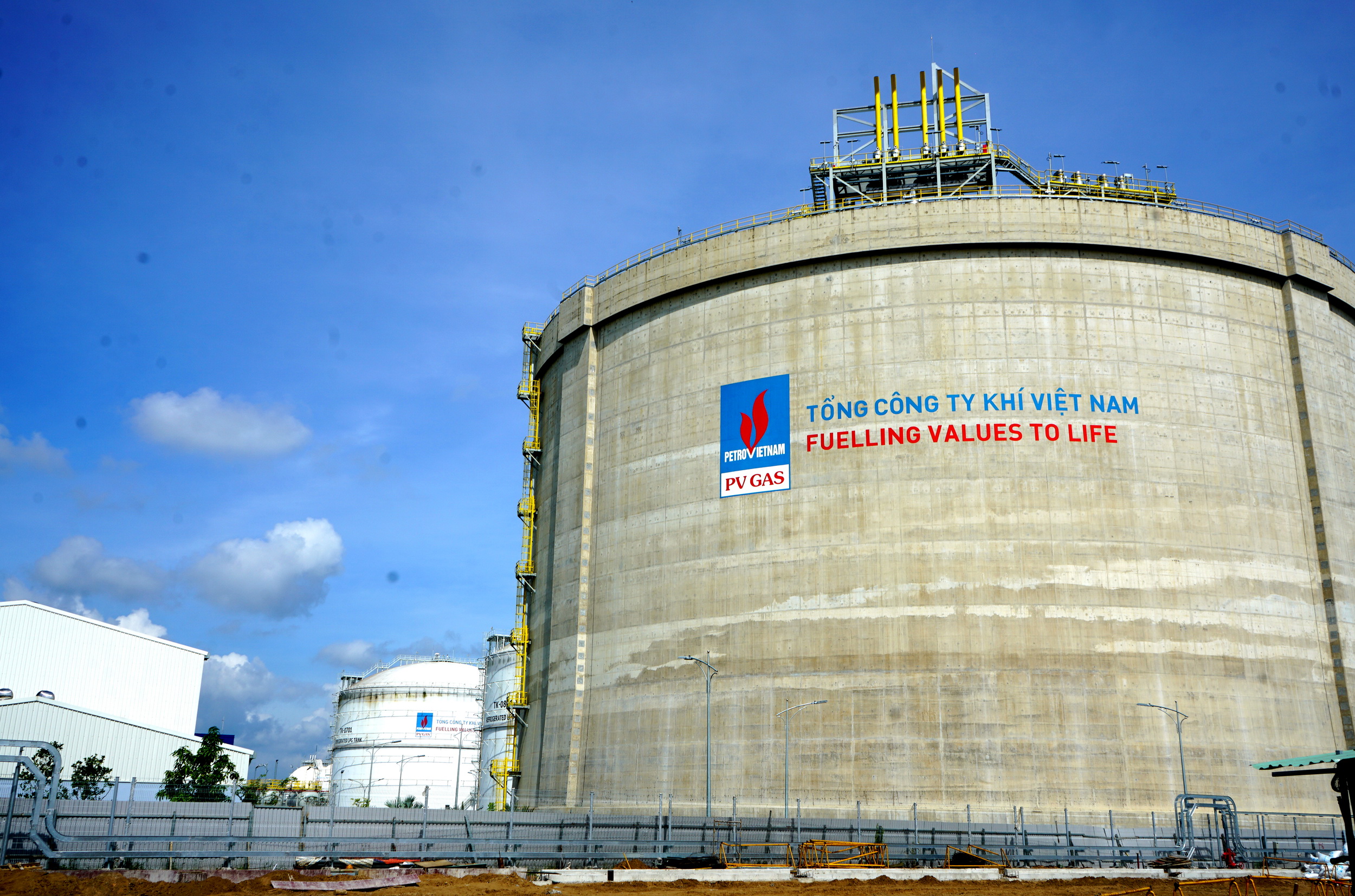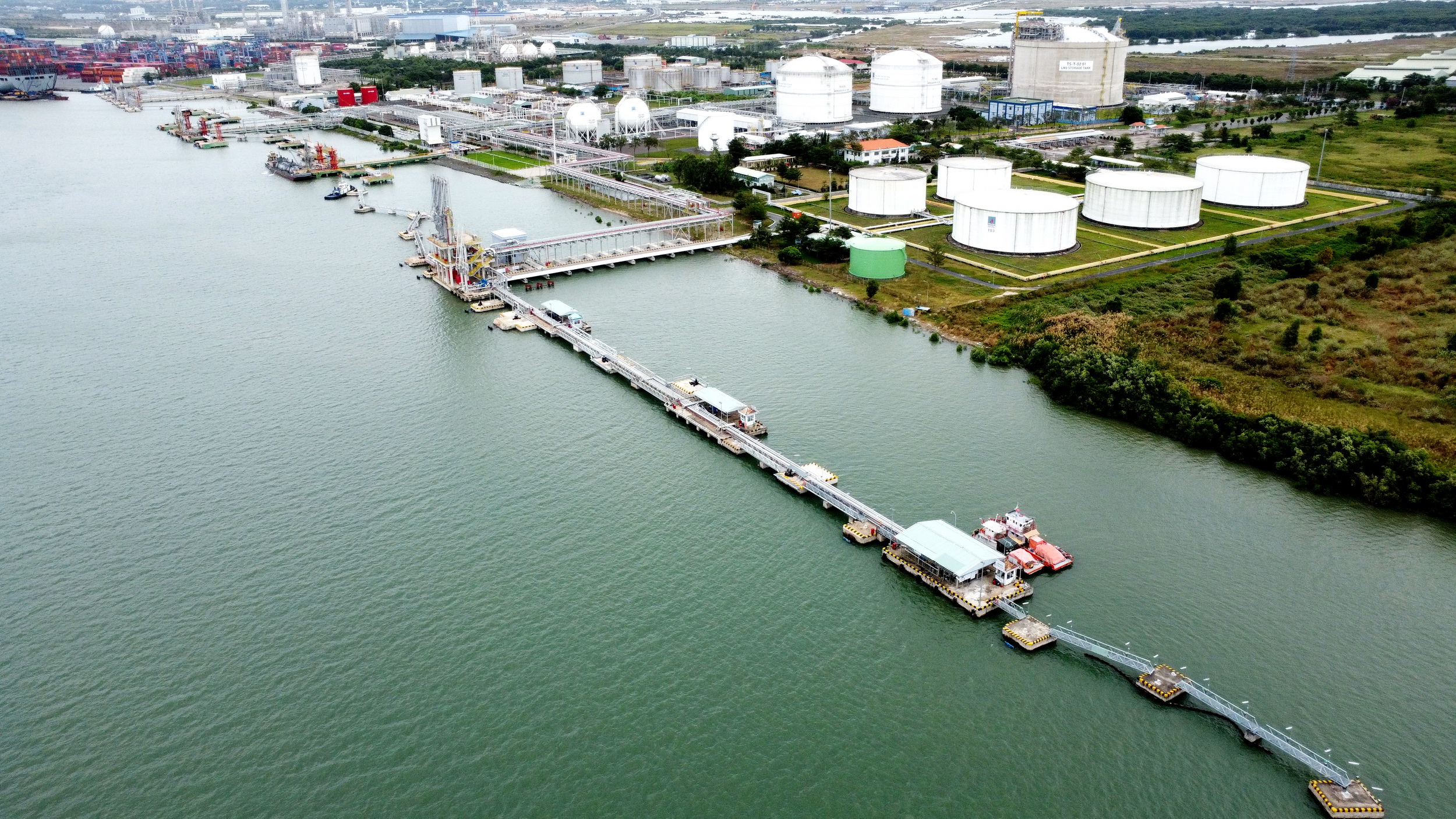LNG in PDP 8: from concept to reality
The Power Development Plan for the period 2021-2030, with a vision to 2050 (PDP 8), has identified the share of LNG-fueled power to be over 14.9% of the total national installed power source capacity by 2030, which is expected to help ensure a sufficient, stable, and safe supply for the national power system.
An efficient and competitive LNG market
Several issues related to infrastructure and policy mechanisms need addressing before the start of a developed LNG market. The first to mention is to construct internationally standardized LNG terminals in strategic locations which can handle large LNG carriers. Additionally, establishing efficient storage and distribution systems for LNG (and re-gased LNG) is also needed. This includes constructing small-scale LNG storage facilities, dedicated LNG transportation fleet, distribution stations, and regasification units to make LNG approachable to power plants, industrial zones, and households. Most importantly, each in this value chain must go in hand strictly with safety management and environmental protection, along with cost optimization.
The aforementioned PDP 8 also determines that by 2030, there will be 13 new LNG power plants with 22,400 MW total capacity, and 2 more with 3,000 MW each will come online by 2035 to balance the demand within 3 regions: North, North Central Coast, and South.

Equipped with modern technology and connected to PV GAS's existing gas infrastructure, high-capacity Thi Vai LNG Storage will help PV GAS enhance competitiveness in the LNG market.
However, currently there is no policy or mechanism to manage and encourage investment in energy clusters and centralized LNG hub ports (LNG Hubs) while the feasibility of LNG infrastructures (import, storage, regasification, and transportation) to supply LNG to power plants must be ensured, meaning sponsors have to invest in separate LNG import terminals in a very complex way: 1 power center (power plant) + 1 LNG import and gas regasification terminal (or Floating Storage Regasification Unit). This implies that as many power plants as there are, there will be an equal number of LNG terminals scattered along the entire Vietnam coastline.
Such scattered small capacity terminals accompany each LNG power plant does more harm than good when they fail to utilize existing infrastructure and reduce costs while unable to maximize the natural advantages to establish energy cluster networks and LNG hubs with shared infrastructure (import terminals and pipelines). These might ultimately lead to rising bills as consumers are paying for every new infrastructures.
Based on the site planning of LNG power plants in PDP 8 (LNG import volume is forecasted to reach 14.46 million tons/year by 2030 and an additional 1.92 million tons/year by 2035), to promote sustainable development, Vietnam's LNG-to-power value chain needs to follow the model of a centralized LNG hub: large-capacity central LNG hubs supply gas to various power plants via a main pipeline system (power plants only need to establish their own pipeline to connect to the main pipeline) and to industrial customers and households via transportation and distribution fleets by waterways, on land or railway.
With this model, only 3 centralized LNG hub ports are needed, with each’s capacity ranging from 3 to 6 million tons/year (potentially up to 10 million tons/year for future expansions), located in: Thi Vai (Ba Ria - Vung Tau), Son My (Binh Thuan), and the Northern/North Central region.
So far, Thi Vai and Son My LNG hub projects have achieved certain milestones, in which Thi Vai LNG Terminal is preparing for the commisioning to come into commercial operation. Son My is taking necessary steps for the financing stage.
Gas price problems
Energy experts have stated the prices of LNG in Vietnam market are influenced by two main factors. Firstly, the price of imported LNG and the associated costs for receiving, storing, re-gasifying, and distributing. Depending on the import source and conditions (geographical location, experience and capacity of suppliers, etc), the selection strategies (direct negotiations, open tender, etc), purchasing methods (spot or term, etc), as well as the costs of construction, operation and maintenance of LNG infrastructures and the price of LNG/regasified gas for power plants and consumers may fluctuate.

PV GAS’s Vung Tau terminal is capable of handling LNG vessels with carrying capacity of up to 100,000 DWT.
Secondly, prices of competing fuels such as FO, DO, LPG, gasoline, electricity, biomass, biofuels, etc will affect the price of LNG supplied to customers. For supplying to power plants, LNG price is affected by: prices of competing fuel sources, grid balancing, local electricity market pricing mechanisms (cost-based, price-based) and so forth.
LNG has been proven to be competitive with other liquids such as gasoline and diesel oil. However, the Vietnamese are at their first stages in the LNG playground, wooing the completion of the first LNG infrastructure, Thi Vai, will help reduce distribution costs and make LNG affordable.
For LNG supplied to power plants, specific guidelines are needed to determine the electricity generation prices from LNG, including both fuel and (fuel) transportation costs, as well as pricing methods and electricity generation on the national grid to perform the offtake obligations from spot market or term contracts, in order to make use of good prices in both short and long positions while ensuring a stable supply for the power sector. In addition, the distribution of LNG to power plants also requires a policy mechanism for allocating imported LNG concurrently with domestic gas consumption, using shared distribution infrastructure, which will be of great help to smoothly reach an agreement between power plants and LNG suppliers when it comes to gas allocation.
In summary, to promote the development of the LNG market in Vietnam, there are several important and necessary measures. These include investments in infrastructure, the establishment of clear, feasible, practical, and effective policies and regulations, the construction of distribution systems for market access, and international cooperation and will create favorable conditions for the national energy security and sustainable development.